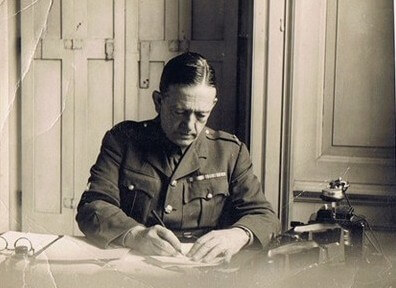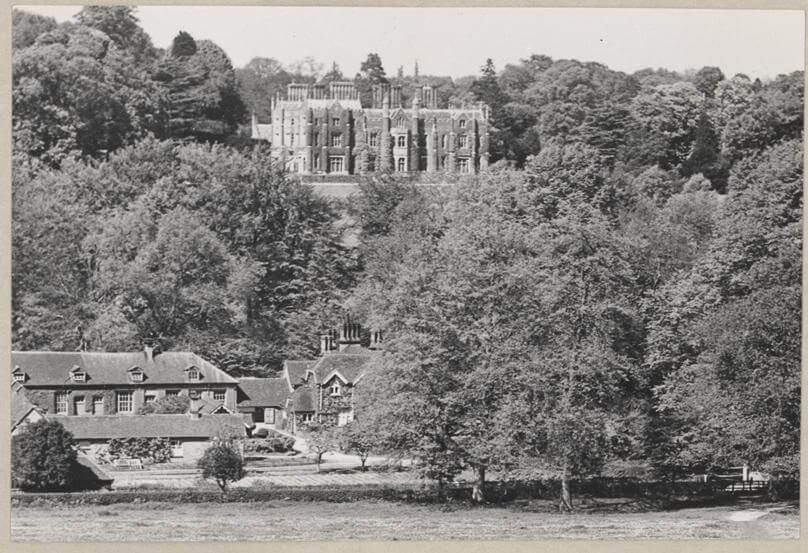
This article was written by Helen Fry and is published here with her permission.
‘Latimer was a very secret place; the prisoners entered and left in closed vans, so they never knew where they were. We didn’t want the Swiss Red Cross nosing around,’ Former intelligence officer, Dr John Whitten
During WW2, Latimer House became the centre of highly top secret activities run by MI5 and MI6 under the obscure name Combined Services Detailed Interrogation Unit (CSDIC). It masked as a supply depot as No.1 Distribution Centre and no one locally knew its true activities. Even Parliament was not privy to its existence. British Intelligence realised that the most important assets in wartime are the prisoners who hold a wealth of information. The challenge was how to get the most valuable information about of them. Interrogations were not necessarily productive, so it was decided to secretly bug the conversations of the prisoners in their cells. Latimer House became pivotal as the unit’s headquarters from May 1942. Thousands of German prisoners, including Hitler’s Generals, would pass through Latimer House between 1942 and 1945. During the course of the war, this unit bugged the conversations of over 10,000 German prisoners-of-war, all recorded in over 100,000 transcripts that now survive in the National Archives. The prisoners had no idea that they were being overheard and spoke freely to each other, thus giving away lots of important information and secrets about the war in the air, at sea and on land. The intelligence gleaned at Latimer and its sister sites aided the intelligence from Bletchley Park and enabled Britain to win the war.
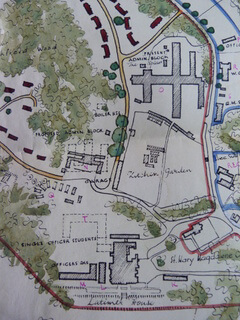
Plans to convert the site at Latimer began a year earlier in 1941. Such was the importance attached to it, that Prime Minister Churchill ordered an unlimited budget to be spent on converting the estate for ‘secret purposes’. The equivalent of £21 million in today’s money was spent on setting up operations here. This included the construction of special buildings to house the M Room (a room with special listening and recording equipment), several interrogations rooms and administration block. The cell blocks were constructed along a long north-south corridor, divided down the whole centre by a breeze block wall. At each end was a telescopic, steel-slatted security grille. A central watchtower with gun slits overlooked the whole complex which became known as ‘the spider’. After D-Day and the capture of so many POWs, it was necessary to construct another ‘cage’ on lawns near ‘the spider’. Security around the site was extremely tight, enclosed by a barbed wire perimeter fence and two checkpoint entrances. Photography was strictly forbidden and no one could enter without a special permit.

The head of the unit was Colonel Thomas Kendrick, a senior member of MI6, who had undertaken spying missions for the British Secret Service in Europe in the 1920s and 1930s. Across three sites, including Latimer, Kendrick had a thousand staff. He had around 200 intelligence officers, men and women, who carried out interrogations or compiled intelligence reports and other administrative duties, plus 80-90 secret listeners.

The secret listeners were stationed in the ‘M Room’ from where they listened in to the conversations of the prisoners in their cells. They had to be fluent German speakers such that by 1943, most of them were German-Jewish refugees who had fled Nazi Germany and were serving in the British Army. (Read Fritz Lustig‘s obituary here.)
Latimer House held many of Hitler’s German Generals for a few days before they were transferred to more permanent wartime accommodation at the stately house of Trent Park, Cockfosters in North London. British Intelligence realised that it was more productive to ‘befriend’ the Generals than try to extract information by threats.
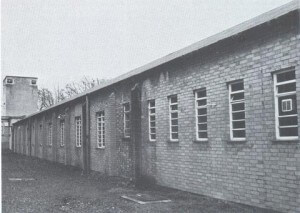
A General was sometimes taken for a walk with an intelligence officer in the fields around the estate or the King’s Walk which has changed little since then. Along the King’s Walk, and in some privacy, it was hoped that the German Generals might discuss military matters with the British officer, and that they would part with respect and empathy for each other. It was hoped that a mutual understanding might lead the General to inadvertently give something away about Nazi Germany. At one time, the gardener at Latimer boasted no fewer than 15 German Generals helping him to dig the vegetable garden.
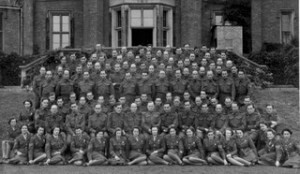
There is an oral tradition that Rudolf Hess, Hitler’s Deputy, was held at Latimer House for a short time, probably during 1942 before he was moved to Abergavenny in Wales. Hess was the highest ranking German prisoner ever held by British Intelligence after his failed solo flight and crash landing in Scotland on 10 May 1941. Lots of controversy surrounds why he came to England and whether it was with the knowledge of Hitler. Hess wished to negotiate peace with Britain to end a war which he believed Britain could not win. Hess’s conversations were bugged, too, and only some of these transcripts appear to have been declassified. It is possible to see the room in which Hess was reputedly held at Latimer. Interestingly, it turns out to be next to Kendrick’s office on the first floor of the house.
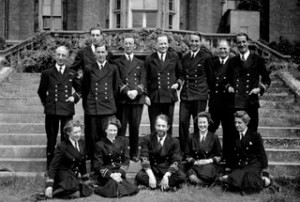
(PHO3642)
Intelligence gathered at this site proved critical for the outcome of the war. Here, the secret listeners overheard details of the development of Hitler’s ‘secret weapons’ – the deadly V1 (doodlebugs) and V2. The M Room staff gathered an impressive amount of intelligence on all aspects of the Nazi war machine. In themselves, the tens of thousands of snippets of information may seem obscure, but when placed in the overall jigsaw, it gave an impressive knowledge of the enemy. It ranged from details of German battle plans to communication codes used at sea, construction and technology on board U-boats and battleships, new technology on German aircraft, the strength of enemy armed forces and their training, aerial and magnetic torpedoes, production of enemy aircraft, conditions in Germany, tanks, “S” boats, aerodromes in German-occupied countries, navigation on aircraft, parachute troops, and even details about Hitler’s personal movements and daily habits. These are just some examples of the vast range of material that was gathered and passed to intelligence chiefs. Much of Latimer’s wartime past remained shrouded in mystery until extensive research by historian Helen Fry in her books, The M Room: Secret Listeners who Bugged the Nazis (2013) and Spymaster: The Secret Life of Kendrick (2014).
A contingent of American intelligence officers were based at this wartime site, too, working alongside Kendrick’s team of interrogators. Kendrick himself was involved in the training of US intelligence officers of the OSS (Office of Strategic Services and forerunner of the CIA). It was within the perimeters of Latimer that American Ambassador, John Winant, had his country residence. During the war and after, the American Embassy was effectively relocated to a farmhouse on the Latimer estate. Near the Great White Farm (now demolished), stood a plain, yellow and light-reddish brick farmhouse which served as Winant’s residence, and from where he conducted affairs of state. He was a very close friend of Winston Churchill who was known to have spent many weekends with him at the country farmhouse at Latimer, which is located roughly halfway between London and Churchill’s wartime country residence at Ditchley.
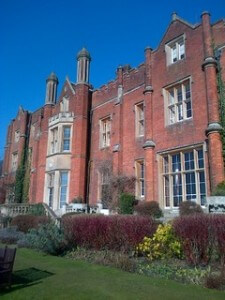
After the war, Latimer House became a joint Defence Training College situated in the various buildings on the estate. But the house is rumoured to have had a very secret post-war history that has yet to be uncovered. Links to intelligence beyond WW2 and into the Cold War are made in suggestions that it contained a training school for MI6. Locals believe that the Secret Service training centre placed at Sarratt by John Le Carré’s in his novels Smiley’s People, and Tinker, Tailor, Soldier, Spy is really a veiled reference to Latimer House which is situated only a mile from Sarratt. Furthermore, when the estate was purchased in the 1980s, a clause was added to the conveyance about a secret tunnel behind a wall in the basement of the main house. That wall was not to be touched for 50 years… Latimer continues to hold many coveted secrets that may one day be finally revealed.
See also information about two books about Intelligence and Interrogation.

